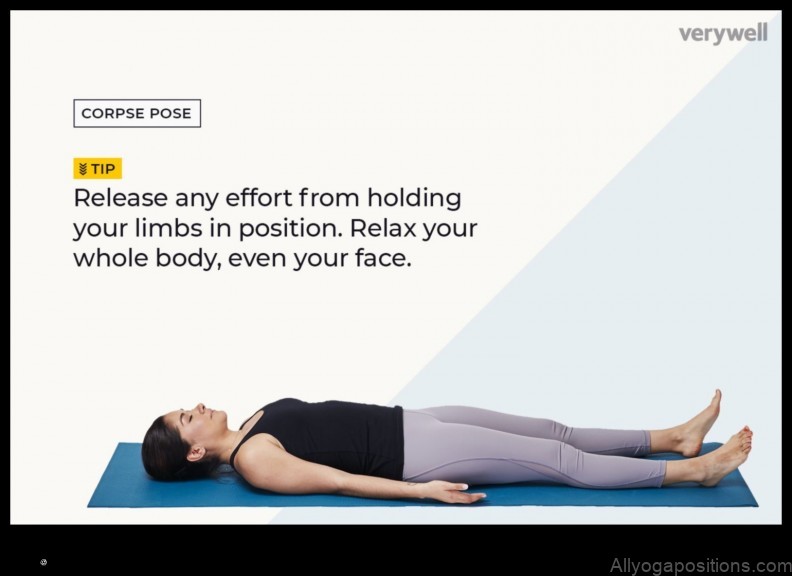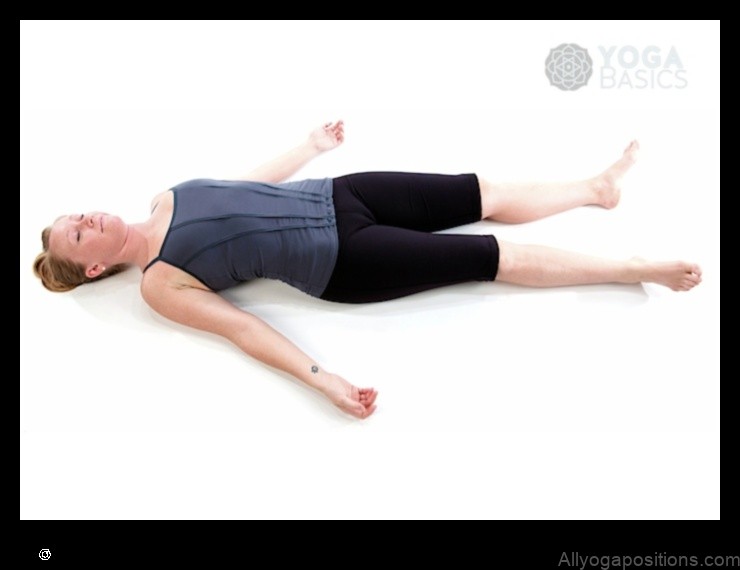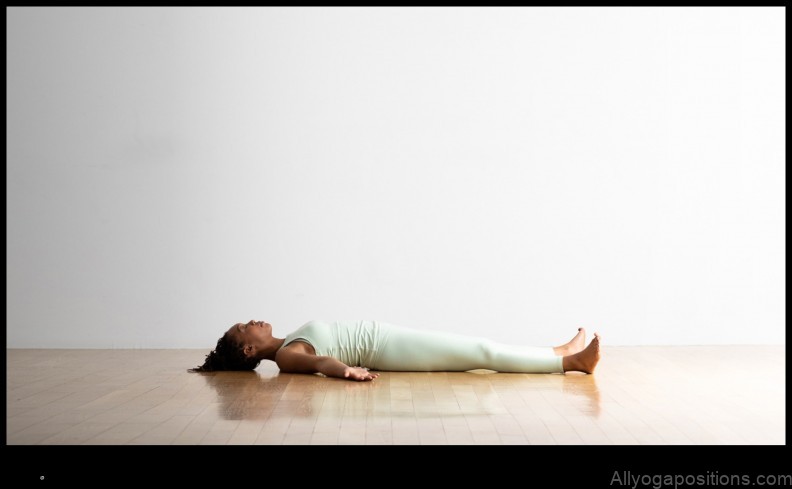
Corpse Pose Yoga Pose
Corpse pose, also known as savasana, is a relaxation pose in yoga. It is typically practiced at the end of a yoga session to help the body and mind to relax.
Corpse pose is a simple pose that can be done by people of all ages and levels of fitness. It is a great way to relieve stress, improve sleep, and reduce pain.
To do corpse pose, lie down on your back with your legs extended and your arms at your sides. Close your eyes and relax your entire body. Focus on your breath and allow your mind to wander.
Stay in corpse pose for as long as you like, or for up to 10 minutes. When you are ready to come out of the pose, slowly roll over to one side and sit up.
Corpse pose is a safe and beneficial pose for most people. However, there are a few contraindications to be aware of.
- Do not do corpse pose if you have any of the following conditions:
- High blood pressure
- Heart disease
- Severe neck or back pain
- If you are pregnant, talk to your doctor before doing corpse pose.
Corpse pose is a great way to relax and de-stress. It is a simple pose that can be done by people of all ages and levels of fitness. If you have any questions about corpse pose, talk to your doctor or a yoga instructor.
| Feature | Answer |
|---|---|
| Corpse Pose | Also known as Savasana, this is a yoga pose in which the body is relaxed and the mind is still. |
| Savasana | A state of deep relaxation in which the body and mind are at rest. |
| Relaxation | The act of reducing tension or anxiety in the body and mind. |
| Yoga | A mind-body practice that combines physical postures, breathing exercises, and meditation. |
| Meditation | A practice that involves focusing the mind on a single object or thought in order to achieve a state of mental calmness and clarity. |

What is Savasana?
Savasana, also known as Corpse Pose, is a yoga pose that is typically practiced at the end of a yoga session. It is a passive pose in which the practitioner lies flat on their back with their eyes closed and their arms and legs relaxed. Savasana is a time for the practitioner to relax and let go of any tension or stress. It is also a time to reflect on the practice and to integrate the benefits of the yoga session.
Savasana is a simple pose, but it can be challenging to do correctly. It is important to relax all of the muscles in the body, including the muscles of the face and jaw. It is also important to breathe deeply and slowly.
Savasana can provide a number of benefits, including:
- Reduced stress and anxiety
- Improved sleep
- Increased relaxation
- Improved focus and concentration
- Reduced pain
Savasana is a safe pose for most people to practice. However, it is important to avoid practicing Savasana if you have any of the following conditions:
- High blood pressure
- Heart disease
- Pregnancy
- Recent surgery
If you have any concerns about practicing Savasana, you should talk to your doctor before doing so.
3. Benefits of Savasana
Savasana has many benefits for both physical and mental health. Some of the benefits include:
- Reduced stress and anxiety
- Improved sleep quality
- Reduced pain
- Increased energy levels
- Improved focus and concentration
- Enhanced relaxation
- Increased flexibility
- Improved balance
- Reduced inflammation

How to do Savasana
Lie down on your back with your legs extended and your arms at your sides.
Close your eyes and relax your entire body.
Breathe deeply and slowly, allowing your body to sink into the floor.
Let go of all tension and stress, and allow yourself to completely relax.
Stay in this position for at least 5 minutes, or for as long as you like.
When you are ready to come out of Savasana, slowly open your eyes and sit up.
Take a few deep breaths and then stand up.
Savasana is a wonderful way to relax and de-stress. It can also help to improve your sleep, reduce pain, and increase your energy levels.
If you are new to yoga, it is important to consult with your doctor before practicing Savasana.
5. Common Mistakes in Savasana
Savasana is a simple pose, but there are a few common mistakes that people make that can prevent them from getting the full benefits.
-
Not lying down flat.
-
Crossing your arms or legs.
-
Tightening your muscles.
-
Wiggling or fidgeting.
-
Thinking too much.
To avoid these mistakes, make sure to:
-
Lie down flat on your back, with your legs extended and your arms at your sides.
-
Keep your feet slightly apart and your toes relaxed.
-
Let your arms fall naturally at your sides, with your palms facing up.
-
Relax your entire body, from your toes to your head.
-
Let your mind wander, but don’t dwell on any thoughts.
If you find yourself making any of these mistakes, simply correct yourself and try to relax again. With practice, you’ll be able to do Savasana correctly and enjoy all of its benefits.
6. Contraindications of Savasana
Savasana is generally considered to be a safe pose for most people. However, there are some contraindications to consider, including:
-
Pregnancy: Savasana is generally not recommended for pregnant women in the first trimester, as it can increase the risk of miscarriage. However, it may be safe to practice in the second and third trimesters, as long as you listen to your body and stop if you feel any discomfort.
-
Back pain: If you have back pain, you may want to avoid Savasana or modify the pose so that you are not lying flat on your back. Instead, you can try lying on your side with your knees bent or sitting up with your back supported.
-
Neck pain: If you have neck pain, you may want to avoid Savasana or modify the pose so that your head is supported. You can do this by placing a pillow under your head or by resting your head on a bolster.
-
Headaches: If you have headaches, you may want to avoid Savasana or modify the pose so that you are not lying flat on your back. Instead, you can try lying on your side with your knees bent or sitting up with your back supported.
If you have any concerns about whether Savasana is right for you, talk to your doctor or a qualified yoga instructor.
7. Safety Precautions for Savasana
Savasana is a very safe pose, but there are a few precautions that you should take to avoid any potential injuries.
- Make sure that you are in a comfortable position. If you are feeling any pain or discomfort, adjust your position until you find a spot that is comfortable for you.
- Stay hydrated. Drink plenty of water before and after your yoga practice to stay hydrated.
- Listen to your body. If you feel tired or lightheaded, stop practicing and rest.
- Don’t practice savasana if you are pregnant or have any other medical conditions that could be affected by the pose.
By following these precautions, you can safely enjoy the benefits of savasana.
History of Savasana
8. History of Savasana
Savasana is a modern yoga pose that is thought to have originated in the 19th century. It is believed to have been developed by Swami Kuvalayananda, a pioneering figure in the field of yoga.
Savasana is based on the ancient yogic practice of lying in a relaxed state with the eyes closed. This practice is known as shava mudra, and it is believed to promote deep relaxation and meditation.
Savasana is now a popular yoga pose that is practiced by people of all ages and levels of experience. It is a great way to end a yoga practice, and it can also be practiced on its own as a way to relax and de-stress.
9. Variations of Savasana
There are many variations of Savasana that can be practiced to suit individual needs and preferences. Some of the most common variations include:
- Supine twist: In this variation, you lie on your back with your legs extended and your arms at your sides. Then, slowly twist your body to the right, bringing your left knee to your right shoulder. Hold for a few breaths, then release and return to the starting position. Repeat on the other side.
- Supported Savasana: In this variation, you lie on your back with your legs extended and your arms at your sides. Then, place a bolster or folded blanket under your knees to support your lower back. You can also place a pillow under your head for added comfort.
- Seated Savasana: In this variation, you sit in a comfortable cross-legged position with your back straight and your eyes closed. You can also rest your hands on your knees or thighs.
- Standing Savasana: In this variation, you stand with your feet shoulder-width apart and your arms at your sides. Then, close your eyes and relax your entire body. You can also sway your body gently from side to side or slowly rotate your head in a clockwise or counterclockwise direction.
No matter which variation you choose, the important thing is to find a position that is comfortable and allows you to relax completely. Allow your body to sink into the floor and let go of any tension or stress. Focus on your breath and allow it to slow down and deepen. With each breath, let go of more and more tension until you feel completely relaxed.
FAQ
Q: What is the difference between Savasana and Corpse Pose?
A: Savasana and Corpse Pose are two names for the same yoga pose.
Q: What are the benefits of Savasana?
A: Savasana has many benefits, including reducing stress, improving sleep, and boosting creativity.
Q: How long should I hold Savasana for?
A: The recommended length of time for Savasana is 5-10 minutes.
Table of Contents
Maybe You Like Them Too
- Mindful Finance How Meditation Can Help You Achieve Financial Well-Being
- Yoga and Breath Awareness Cultivating Mindful BreathingA Guide to Using Yoga to Improve Your Breath
- Mindful Meditation Yoga for Mental Clarity A Guide to Clearing Your Mind and Finding Peace
- Breath of Bliss Yoga for Pranayama Harmony
- Yoga for Emotional Healing Body-Mind Centering
